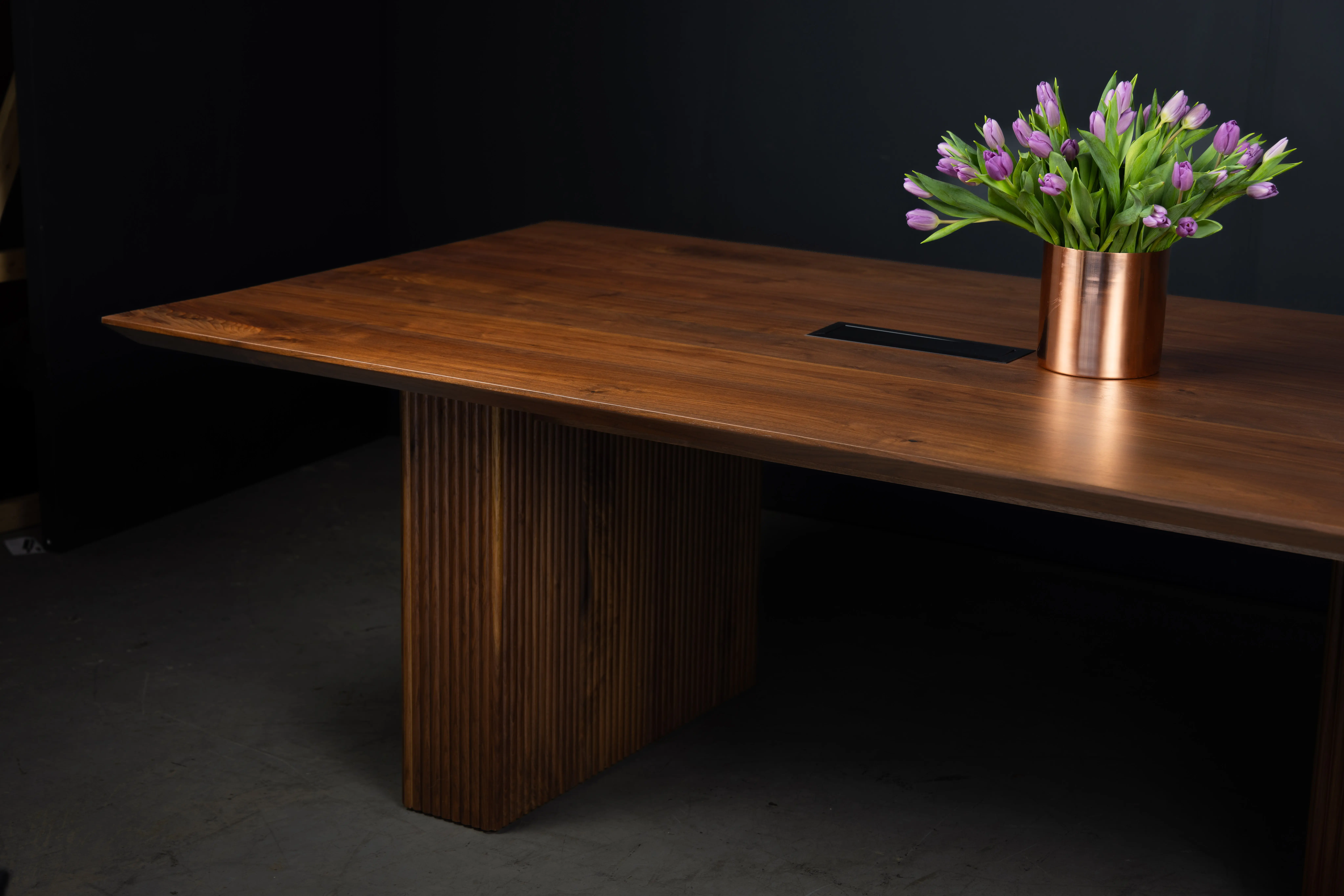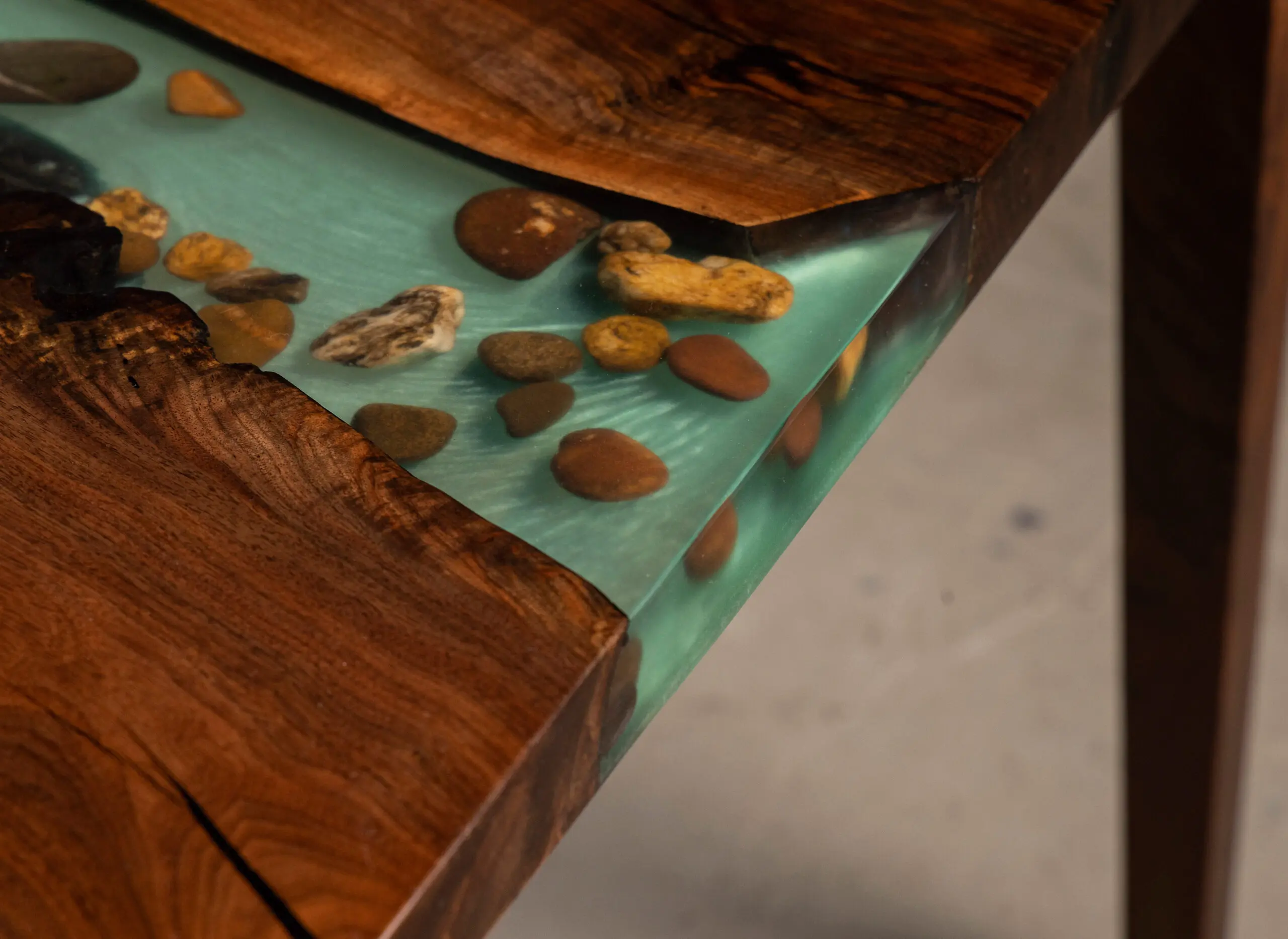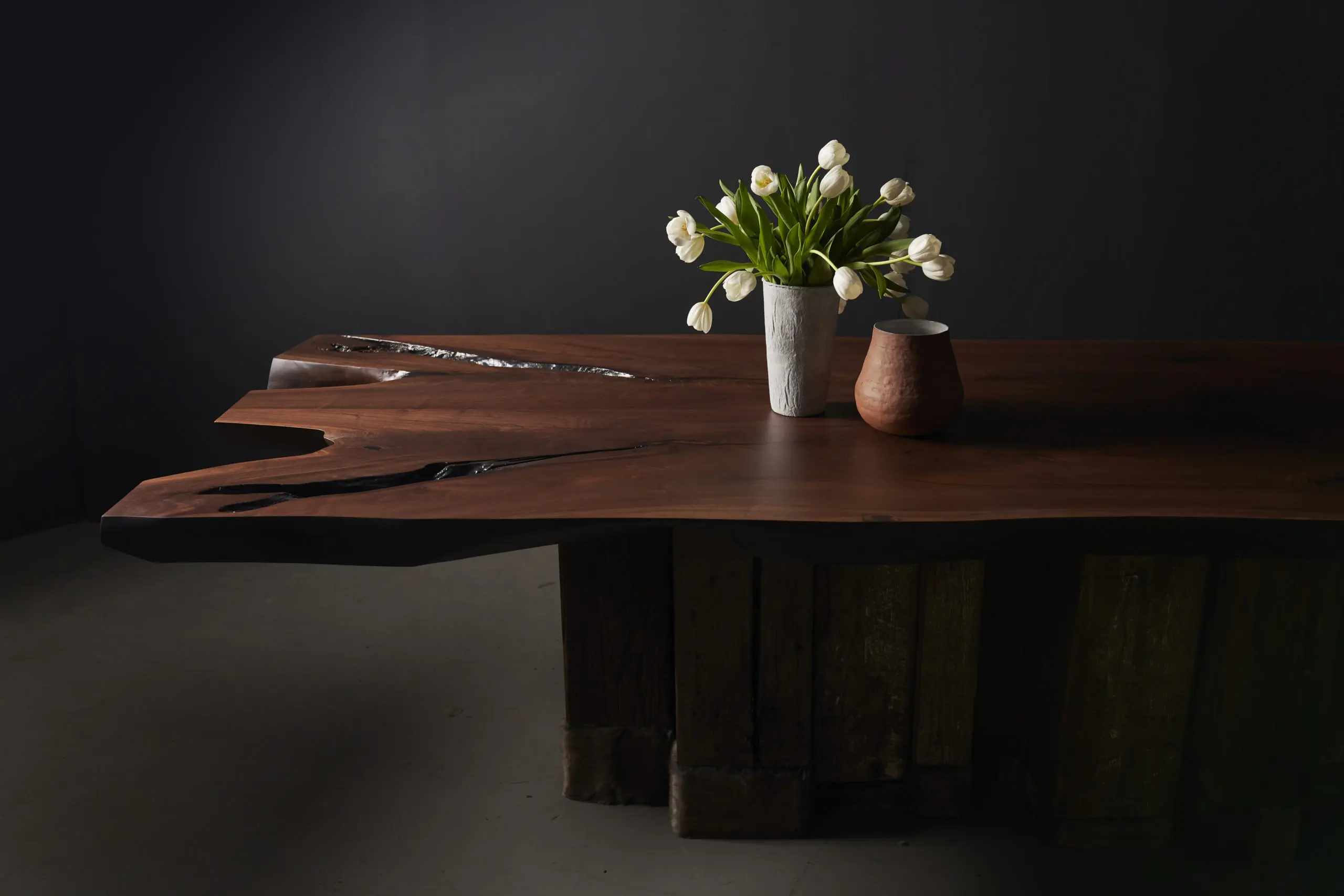The modern waterfall dining table is a culmination of style and craftsmanship. Embracing biophilic design, it displays natural curves within the interior environment, creating a visual illusion of a fluid cascade. Born of a design concept that is deeply rooted in continuity and simplicity, the modern waterfall table unites form and function through aesthetic variety and technical finesse. This article explores the stylistic breadth of the custom waterfall table, by analyzing various models across the creative spectrum. We discuss the historic context, before making a brief overview of different materials, and design ideas for your custom project.
History of waterfall tables
The historical context of the modern waterfall table traces back to the early 20th century. Fluid, continuous, and simplistic, it became a hallmark of several design movements that revolutionized contemporary furniture. The concept itself came to the fore between the 1920s and the 1930s, when the natural characteristics of the materials began to inform the overall design. Bauhaus in Germany, and De Stijl in the Netherlands, promoted the idea of “form follows function”, encouraging architects to maintain the integrity of hardwood species, by emphasizing the continuity of their beautiful grain.
The modern waterfall dining table gained prominence during the middle of the century, finding its stylistic features compatible with the emerging period known as Mid-Century Modern. Designers used American walnut, rosewood, and teak, emphasizing the natural beauty of organic grain patterns, often accentuated by wax, lacquer, or oil.
Soon after, as design conceptions began to evolve with the introduction of new materials, the creative possibilities for the waterfall table expanded. Furniture architects were fascinated with glass and acrylic, which paired nicely with the light and airy aesthetic of the waterfall model. From the iconic Ghost series by designer Cini Boeri during the late 1980s, to the introduction of this concept to console tables, coffee tables, and end tables, the cascading flow was adopted by many design movements to provide elegance and sophistication.
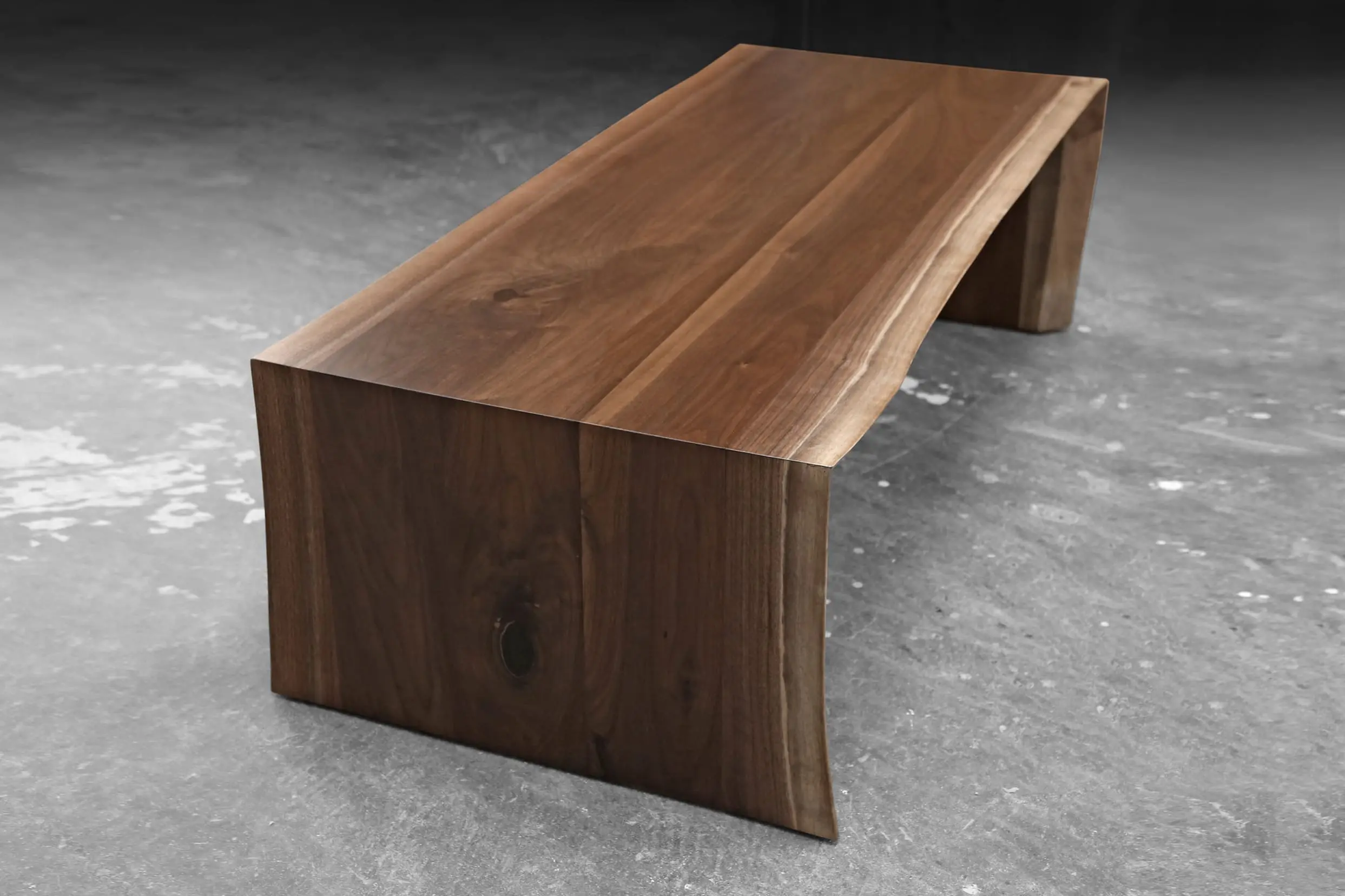
The modern waterfall table
The 21st century gave this timeless furniture piece a new spin. Dispensing with the bold ideas of the 80s, the design has revisited its conceiving principles. The high-end waterfall table is now rarely made from glass and acrylic unless these are used as highlight materials for the much more popular choice – solid wood. Old House Interiors, a national architectural magazine, describes waterfall models as the most prominent variation of Art Deco furniture, which was predominately made of wood.
Interestingly enough, high-end furniture, and luxury design today, are saturated with premium hardwoods. Curvature is a sign of expert craftsmanship, and the waterfall table is an artifact of class and sophistication. Flowing through the landscape of design history, and returning to its roots, the model is now at the forefront of biophilic design.
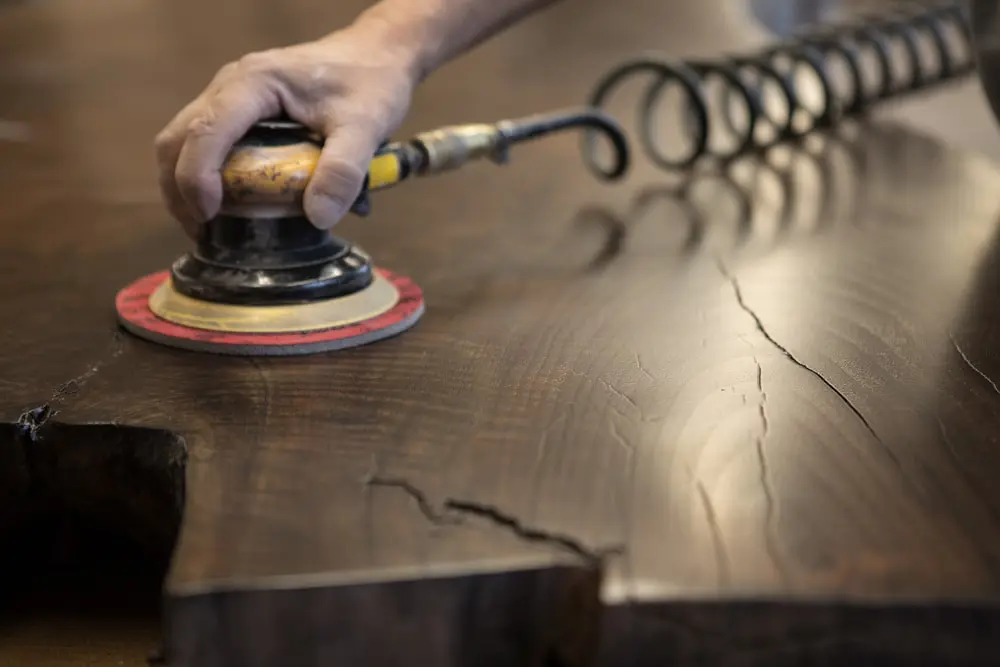
Hardwood design ideas
When it comes to wood species, designers are usually working with rich grain patterns, to achieve a continuous visual narrative. Rarely, manufacturers would employ staining techniques to cover lighter hardwoods with a darker hue, but in these cases, the model usually introduces other features such as curvature or epoxy integration.
In its most minimalistic expression, the modern waterfall dining table relies on sophisticated grain patterns and their continuity, to create a sense of flowing elegance and finesse. The joinery technique also plays a role.
The mitered cut, for example, binds the tabletop and the vertical slab by joining two 45-degree angles. It is often reinforced with biscuits, splines, or dominoes to ensure strength, especially when working with thick materials. All of these can offer visual interest that is hard to replicate in other models.
Curvature, on the other hand, is achieved through bent lamination. This involves the gluing of wooden strips before polishing the form and joining it with traditional techniques at the edges, both to the table top and the base.
Other joinery techniques for waterfall tables include the use of Festool domino, dovetail keys, and the lock miter joint, each adding uniqueness and structural durability.
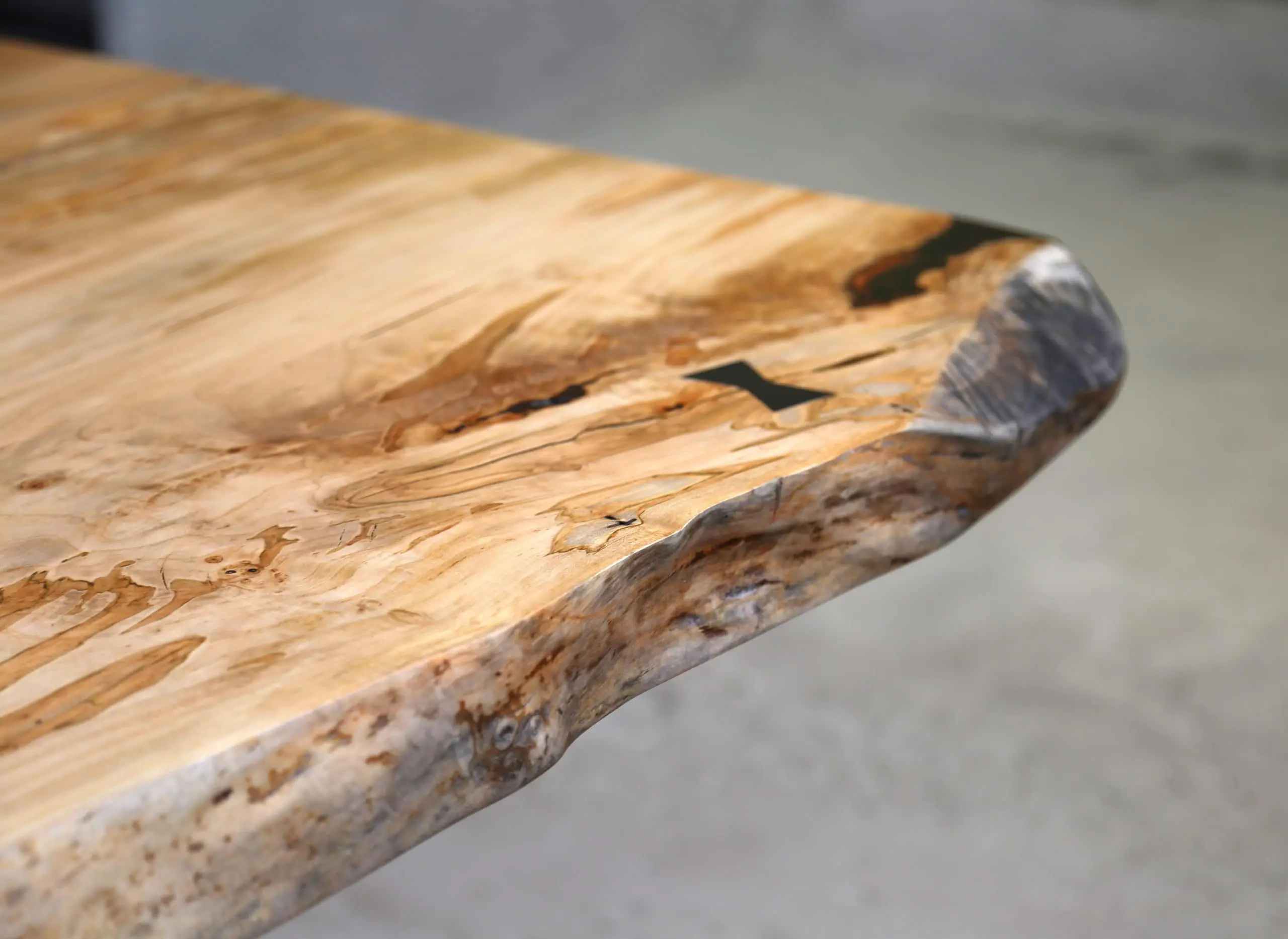
Waterfall dining table with epoxy resin
One way to blend together the aesthetic savoir-faire of wood and glass is to explore the epoxy river model. Made from live edge slabs and chiseled to perfectly mimic the wild American river, the epoxy table is the epitome of luxury, elegance, and sophistication.
At SENTIENT, we responsibly select imposing wooden slabs from renewable sources, allowing them to acclimate for up to two years. Once the perfect piece dries off, we handcraft the form of the river, seal the edges, and apply the epoxy resin under controlled conditions. This way, the resin is smooth, consistent, and durable, without micro-bubbles or visual imperfections.
Joined properly, the horizontal and the vertical slabs align together to create a visual spectacle of perfect continuity.
The epoxy is then polished to a smooth finish, as we start with 400 grit sandpaper and work our way to 2000 and higher. UV protection is added as part of the resin, or applied on top along with wax, creating a functional, durable, and aesthetically impressive work of art. Epoxy resin river tables require many hours of work, but the result is a stunning masterpiece that captures attention right away.
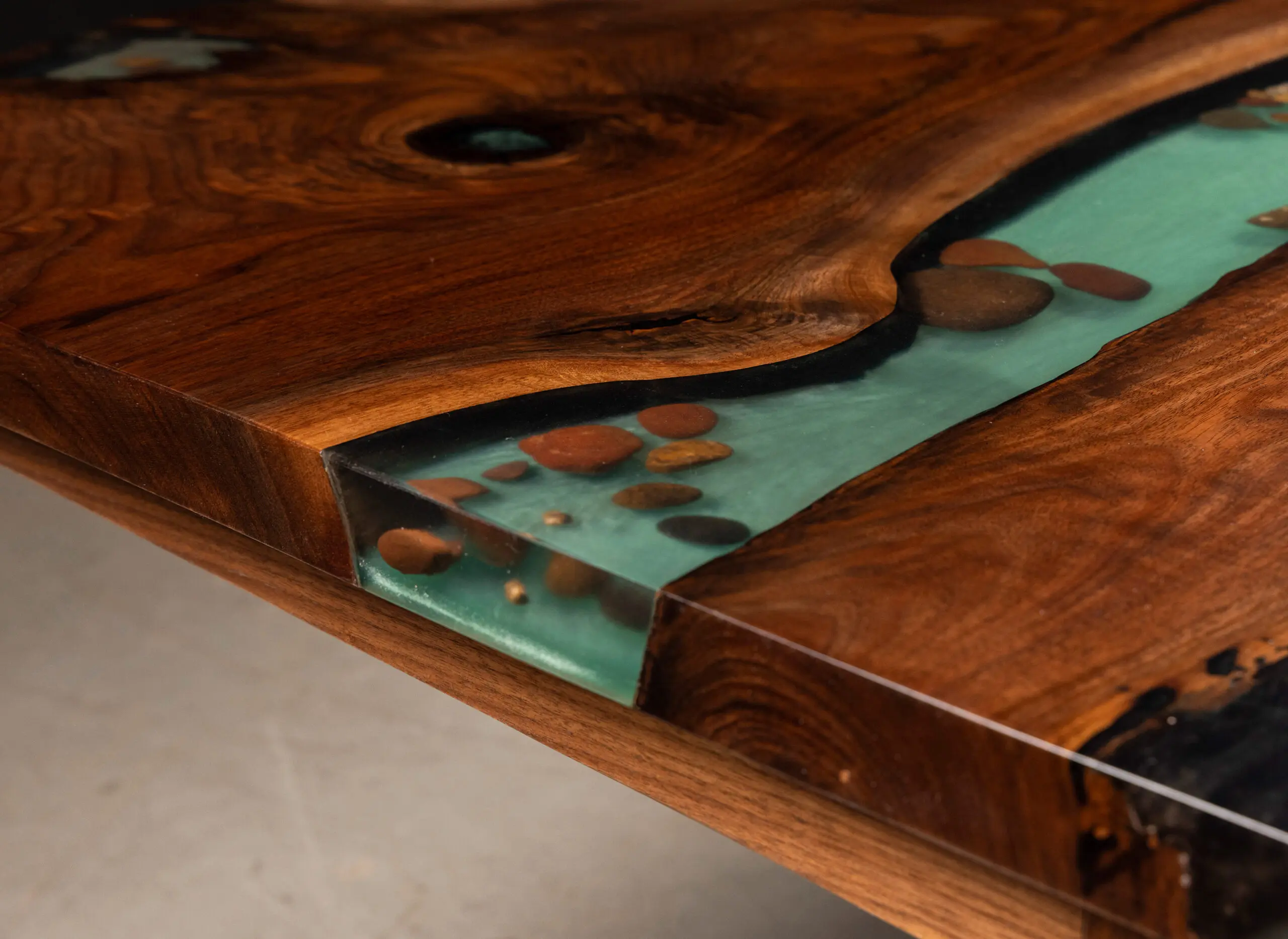
Leg choices for waterfall tables
Acknowledging the stylistic diversity of the modern waterfall dining table, we propose a number of base options. Our team also works with interior designers and furniture architects to materialize their creative vision. The goal is to bring inspiration photos and blueprints to perfection through the technical and stylistic understanding of luxury artisanal furniture.
Leg options for the waterfall table depend on the overall design concept. Clients can order a double waterfall, with a cascading flow that expands in both directions or choose to have the waterfall on one side, while the other is supported by a traditional table base.
We have worked with hairpin legs, V-shaped legs, canted legs, and frame legs, made from various hardwood species or exceptionally strong metals. All options allow customization, both in terms of shape and dimensions, as well as texture, color, and finishing coats. The choice between metal legs and wooden legs depends on the overall design, as it impacts both stylistic and architectural decisions.
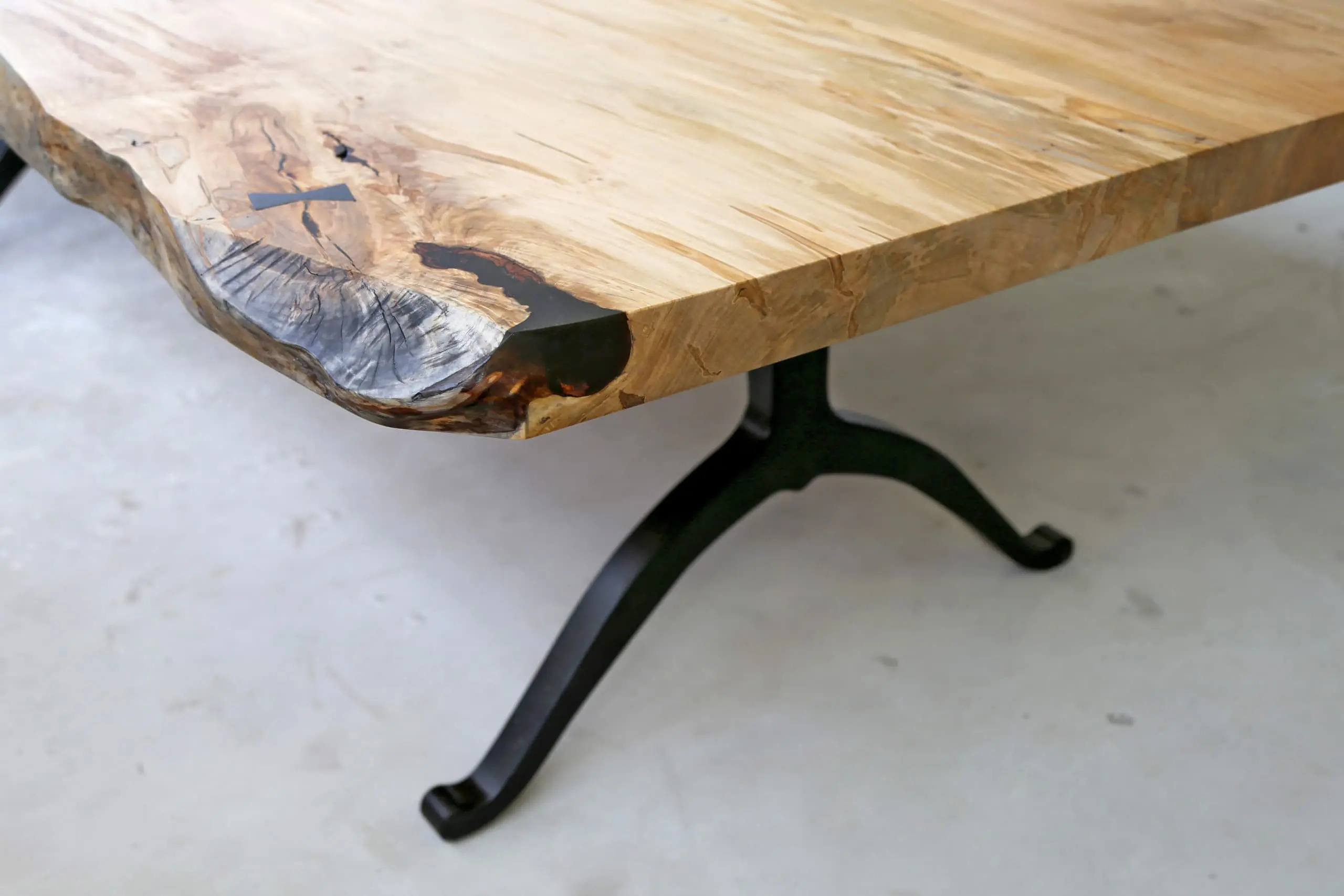
Finishing options for the modern waterfall dining table
Choosing the right finish can significantly impact the aesthetic appeal of a table, making it more durable, and easier to maintain. The choice, however, depends on many factors, including the type of wood, the stylistic direction, and the overall design concept.
Polyurethane, for example, provides ample protection in water-based and oil-based variants, with certain tradeoffs to be aware of. Water options would dry quickly, with significantly lower VOC content, and without a yellowish hue over time. Oil-based polyurethane, on the other hand, is much more durable and creates a warm glow that accentuates the grain pattern.
Danish oil and Tung oil are also excellent choices, as they penetrate deeper and harden the fibers without compromising the natural look of hardwoods. Lacquer is even more desirable, as it provides a hard, durable finish in numerous sheens, from matte to high gloss.
Wax is easy to apply, maintain, and repair, giving wood species like walnut exceptional color depth and an accentuated grain. It is also suitable for application on an epoxy surface but requires constant reapplication over time.
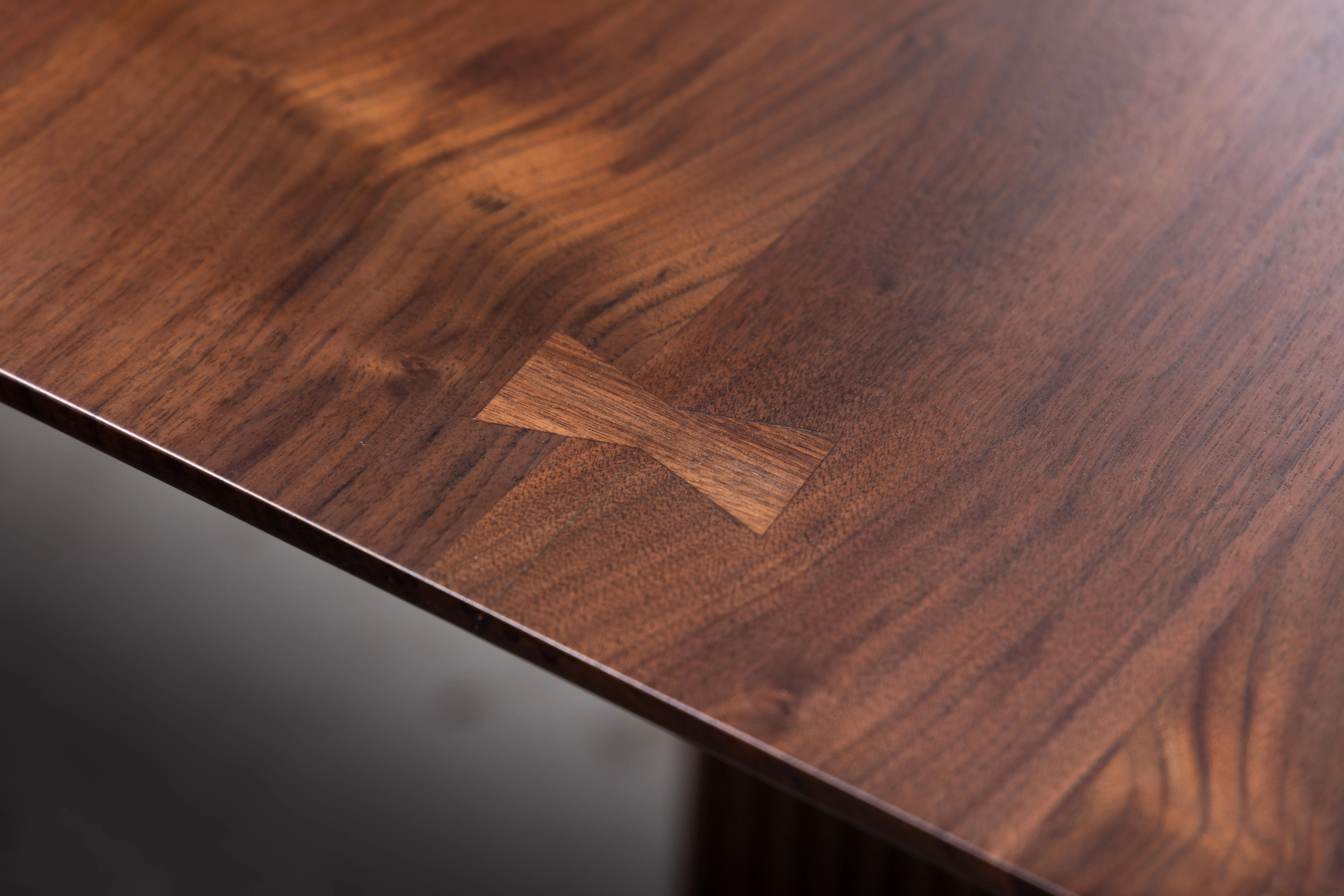
Layout considerations
Designers must consider the overall aesthetic narrative before conceptualizing the waterfall table. The cascade is usually the focal point, so frontal placement is rarely negotiable. Contrasting chairs work well, as long as they offer proximity to the stylistic concept. If hesitant, consider functional art, which most aptly describes the aesthetic narrative.
Situated in Brooklyn, we manufacture a wide range of waterfall tables made of walnut, maple, oak, and other hardwood species. Each model gets special treatment with various finishing options or artistic embellishments such as epoxy resin. Almost always, the goal of designers is to align the model with the rest of the layout, through keen awareness of how these materials interact. Their organic properties guide the overall form of dining furniture, commonly pairing the dining centerpiece with a modern waterfall console table to unite the layout.


